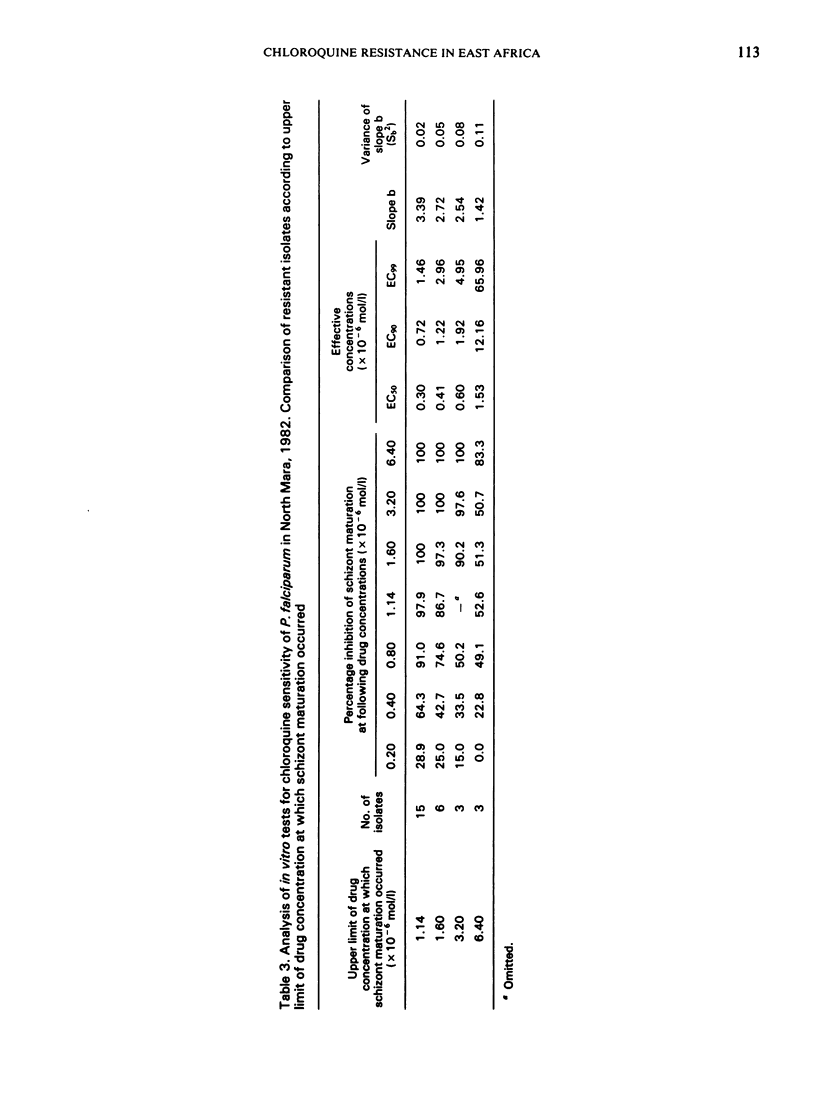Abstract
Serial in vitro and in vivo tests for chloroquine sensitivity of Plasmodium falciparum were carried out from 1979 to 1982 in an area of E. Africa where chemosuppression with chloroquine had been attempted since 1977. Within 1½ years there were signs of a decreasing drug response. Chloroquine resistance was first detected in 1981 and this increased markedly in 1982. Other contributory causes for the rise of parasite rates in children were possibly a decline in the efficiency of the drug distribution system and also immunological factors. Evidence of resistance to pyrimethamine was also found. Observations were made of the heterogeneity of the parasites' responses with emerging resistance. Implications for the future are discussed.
Full text
PDF









Selected References
These references are in PubMed. This may not be the complete list of references from this article.
- Bruce-Chwatt L. J. Chemoprophylaxis of malaria in Africa: the spent "magic bullet". Br Med J (Clin Res Ed) 1982 Sep 11;285(6343):674–676. doi: 10.1136/bmj.285.6343.674. [DOI] [PMC free article] [PubMed] [Google Scholar]
- Bygbjerg I. C., Schapira A., Flachs H., Gomme G., Jepsen S. Mefloquine resistance of falciparum malaria from Tanzania enhanced by treatment. Lancet. 1983 Apr 2;1(8327):774–775. doi: 10.1016/s0140-6736(83)92070-6. [DOI] [PubMed] [Google Scholar]
- Lelijveld J., Mzoo F. The effect of small single doses of cloroquine on Plasmodium faiparum infections in north-eastern Tanzania. Bull World Health Organ. 1970;42(3):471–477. [PMC free article] [PubMed] [Google Scholar]
- MacCormack C. P., Lwihula G. Failure to participate in a malaria chemosuppression programme: North Mara, Tanzania. J Trop Med Hyg. 1983 Jun;86(3):99–107. [PubMed] [Google Scholar]
- Nguyen-Dinh P., Spencer H. C., Chemangey-Masaba S., Churchill F. C. Susceptibility of Plasmodium falciparum to pyrimethamine and sulfadoxine/pyrimethamine in Kisumu, Kenya. Lancet. 1982 Apr 10;1(8276):823–825. doi: 10.1016/s0140-6736(82)91873-6. [DOI] [PubMed] [Google Scholar]
- Onori E., Grab B., Ambroise-Thomas P., Thelu J. Incipient resistance of Plasmodium falciparum to chloroquine among a semi-immune population of the United Republic of Tanzania. 2. The impact of chloroquine used as a chemosuppressant on the immune status of the population. Bull World Health Organ. 1982;60(6):899–906. [PMC free article] [PubMed] [Google Scholar]
- Onori E., Payne D., Grab D., Grab B., Horst H. I., Almeida Franco J., Joia H. Incipient resistance of Plasmodium falciparum to chloroquine among a semi-immune population of the United Republic of Tanzania. 1. Results of in vivo and in vitro studies and of an ophthalmological survey. Bull World Health Organ. 1982;60(1):77–87. [PMC free article] [PubMed] [Google Scholar]
- Pringle G., Avery-Jones S. Observations on the early course of untreated falciparum malaria in semi-immune African children following a short period of protection. Bull World Health Organ. 1966;34(2):269–272. [PMC free article] [PubMed] [Google Scholar]
- Pringle G., Lane F. C. An apparent decline in the efficacy of small doses of chloroquine in suppressing malaria parasitaemias in semi-immune African schoolchildren. East Afr Med J. 1966 Dec;43(12):575–578. [PubMed] [Google Scholar]
- Schwartz I. K., Payne D., Campbell C. C., Khatib O. J. In-vivo and in-vitro assessment of chloroquine-resistant Plasmodium falciparum malaria in Zanzibar. Lancet. 1983 May 7;1(8332):1003–1005. doi: 10.1016/s0140-6736(83)92640-5. [DOI] [PubMed] [Google Scholar]
- Thaithong S. Clones of different sensitivities in drug-resistant isolates of Plasmodium falciparum. Bull World Health Organ. 1983;61(4):709–712. [PMC free article] [PubMed] [Google Scholar]


